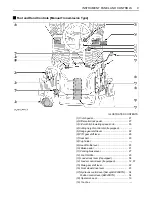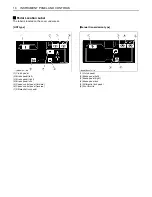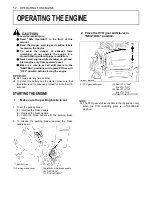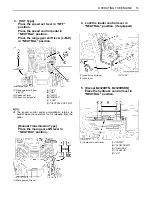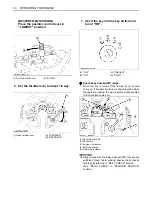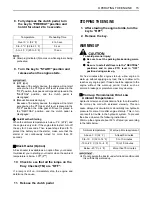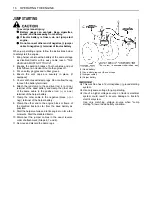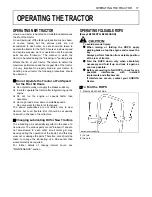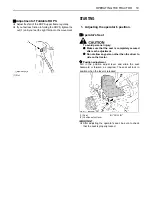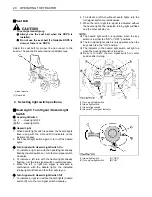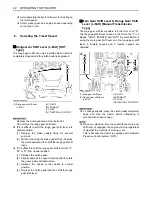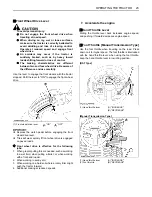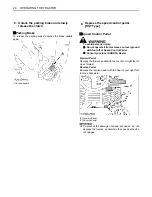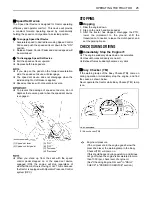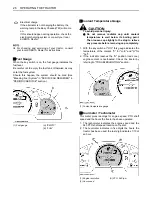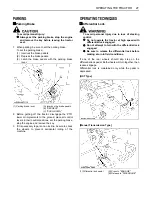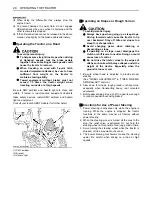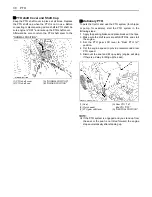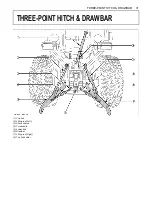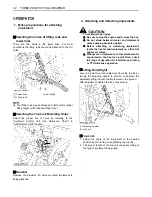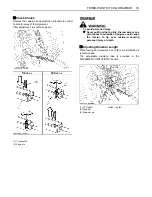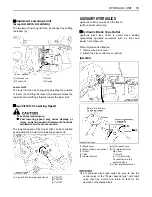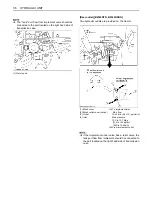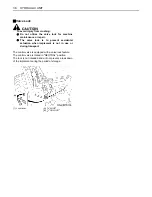
23
OPERATING THE TRACTOR
B
Front Wheel Drive Lever
To avoid personal injury:
A
Do not engage the front wheel drive when
traveling at road speed.
A
When driving on icy, wet or loose surfaces,
make sure the tractor is correctly ballasted to
avoid skidding and loss of steering control.
Operate at reduced speed and engage front
wheel drive.
A
An accident may occur if the tractor is
suddenly braked, such as by heavy towed
loads shifting forward or loss of control.
A
The braking characteristics are different
between two and four wheel drive. Be aware of
the difference and use carefully.
Use the lever to engage the front wheels with the tractor
stopped. Shift the lever to "ON" to engage the front wheel
drive.
A
Depress the clutch pedal before engaging the front
wheel drive lever.
A
Tires will wear quickly if front wheel drive is engaged
on paved roads.
C
Front wheel drive is effective for the following
jobs:
1. When greater pulling force is needed, such as working
in a wet field, when pulling a trailer, or when working
with a front-end loader.
2. When working in sandy soil.
3. When working on a hard soil where a rotary tiller might
push the tractor forward.
4. Additional braking at reduced speeds.
B
Hand Throttle Lever
Pulling the throttle lever back increases engine speed,
and pushing it forward decreases engine speed.
B
Foot Throttle [Manual Transmission Type]
Use the foot throttle when traveling on the road. Press
down on it for higher speed. The foot throttle is interlocked
with the hand throttle lever; when using the foot throttle,
keep the hand throttle lever in low idling position.
[HST Type]
[Manual Transmission Type]
(1) Front wheel drive lever
"ON"
"OFF"
7. Accelerate the engine.
(1) Hand throttle lever
(A) "INCREASE"
(B) "DECREASE"
(1) Hand throttle lever
(2) Foot throttle
(A) "INCREASE
"
(B) "DECREASE"
Summary of Contents for B2320
Page 1: ......
Page 14: ...SAFE OPERATION 6 7 DANGER WARNING AND CAUTION LABELS ...
Page 15: ...7 SAFE OPERATION ...

